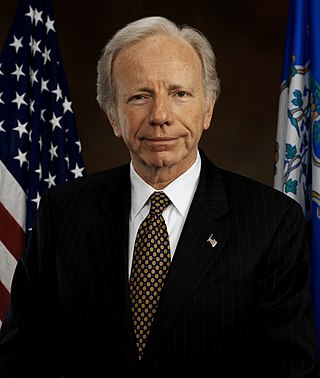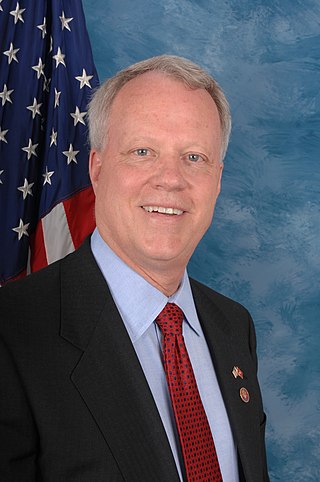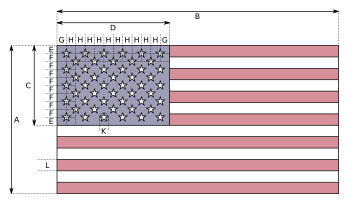The Federal Marriage Amendment (FMA), also referred to by proponents as the Marriage Protection Amendment, was a proposed amendment to the United States Constitution that would legally define marriage as a union of one man and one woman. The FMA would also prevent judicial extension of marriage rights to same-sex couples.

The Authorization for Use of Military Force Against Iraq Resolution of 2002, informally known as the Iraq Resolution, is a joint resolution passed by the United States Congress in October 2002 as Public Law No. 107-243, authorizing the use of the United States Armed Forces against Saddam Hussein's Iraq government in what would be known as Operation Iraqi Freedom.

The Blaine Act, formally titled Joint Resolution Proposing the Twenty-First Amendment to the United States Constitution, is a joint resolution adopted by the United States Congress on February 20, 1933, initiating repeal of the 18th Amendment to the United States Constitution, which established Prohibition in the United States. Repeal was finalized when the 21st Amendment to the Constitution was ratified by the required minimum number of states on December 5, 1933.
United States v. Eichman, 496 U.S. 310 (1990), was a United States Supreme Court case that by a 5–4 decision invalidated a federal law against flag desecration as a violation of free speech under the First Amendment. It was argued together with the case United States v. Haggerty. It built on the opinion handed down in the Court's decision the prior year in Texas v. Johnson (1989), which invalidated on First Amendment grounds a Texas state statute banning flag burning.
The Contract with America was a legislative agenda advocated by the Republican Party during the 1994 congressional election campaign. Written by Newt Gingrich and Dick Armey, and in part using text from former President Ronald Reagan's 1985 State of the Union Address, the Contract detailed the actions the Republicans promised to take if they became the majority party in the United States House of Representatives for the first time in 40 years. Many of the Contract's policy ideas originated at The Heritage Foundation, a conservative think tank.

Collin Clark Peterson is an American accountant, politician, and lobbyist who served as the U.S. representative for Minnesota's 7th congressional district from 1991 to 2021. A member of the Minnesota Democratic–Farmer–Labor Party (DFL). he was chairman of the House Committee on Agriculture from 2019 to 2021 and previously holding the office from 2007 to 2011; he had been ranking member from 2011 to 2019 and 2005 to 2007. Peterson was the most senior U.S. Representative from Minnesota and the dean of Minnesota's congressional delegation. In 2020, Peterson was defeated by Michelle Fischbach, ending his 30-year tenure in the United States House of Representatives. In 2022, Peterson registered as a federal lobbyist after opening an eponymous consulting firm.
Texas v. Johnson, 491 U.S. 397 (1989), is a landmark decision by the Supreme Court of the United States in which the Court held, 5–4, that burning the Flag of the United States was protected speech under the First Amendment to the U.S. Constitution, as doing so counts as symbolic speech and political speech.

John Bennett Johnston Jr. is a retired American attorney, politician, and later lobbyist. A member of the Democratic Party, Johnston represented Louisiana in the U.S. Senate from 1972 to 1997.

A conference committee is a joint committee of the United States Congress appointed by the House of Representatives and Senate to resolve disagreements on a particular bill. A conference committee is usually composed of senior members of the standing committees of each house that originally considered the legislation.
Bills have been introduced in the US Congress on several occasions to amend the US Constitution to abolish or to reduce the power of the Electoral College and to provide for the direct popular election of the US president and vice president.

Joe Lieberman was an American politician who served as a United States Senator from Connecticut from 1989 to 2013. A former member of the Democratic Party, he was the party's nominee for Vice President in the 2000 election. He was an Independent prior to his death.
The following is a timeline of the flag of the United States.

The Flag Protection Act of 2005 was a proposed United States federal law introduced in the United States Senate at the 109th United States Congress on October 24, 2005, by Senator Bob Bennett (R-Utah) and co-sponsored by Senator Hillary Clinton (D-N.Y.). Later co-sponsors included Barbara Boxer (D-Calif.), Mark Pryor (D-Ark.) and Thomas Carper (D-Del.).

Paul Collins Broun Jr. is an American physician and politician who served as the U.S. representative for Georgia's 10th congressional district from 2007 to 2015. He is a member of the Republican Party and was a member of the Tea Party Caucus.

The 2004 presidential campaign of Joe Lieberman, the long-time United States senator from Connecticut and the vice-presidential nominee under Al Gore in the previous election, began on January 13, 2003, when he announced his intention to seek the Democratic nomination as a candidate in the 2004 presidential election. Describing his presidential hopes, Lieberman opined that his historically hawkish stance would appeal to voters. Prior to his defeat in New Hampshire, Lieberman famously declared his campaign was picking up "Joementum". On February 3, 2004, Lieberman withdrew his candidacy after failing to win any of the five primaries or two caucuses held that day. He acknowledged to the Hartford Courant that his support for the war in Iraq was a large part of his undoing with voters. Lieberman's former running candidate Al Gore did not support Lieberman's presidential run, and in December 2003 endorsed Howard Dean's candidacy, saying "This is about all of us and all of us need to get behind the strongest candidate [Dean]."

The United States Senate is the upper chamber of the United States Congress. The United States Senate and the lower chamber of Congress, the United States House of Representatives, comprise the federal bicameral legislature of the United States. Together, the Senate and the House maintain authority under Article One of the U.S. Constitution to pass or defeat federal legislation. The Senate has exclusive power to confirm U.S. presidential appointments, approve or reject treaties, and try cases of impeachment brought by the House. The Senate and the House provide a check and balance on the powers of the executive and judicial branches of government.

The Continuing Appropriations Resolution, 2014 is a bill that was introduced into the United States House of Representatives on September 10, 2013. The original text of the bill was for a continuing resolution that would make continuing appropriations for the fiscal year 2014 United States federal budget. Though versions of the bill passed each house of Congress, the House and Senate were not able to reconcile the bills and pass a compromise measure.

The Bipartisan Budget Act of 2013 is a federal statute concerning spending and the budget in the United States, that was signed into law by President Barack Obama on December 26, 2013. On December 10, 2013, pursuant to the provisions of the Continuing Appropriations Act, 2014 calling for a joint budget conference to work on possible compromises, Representative Paul Ryan and Senator Patty Murray announced a compromise that they had agreed to after extended discussions between them. The law raises the sequestration caps for fiscal years 2014 and 2015, in return for extending the imposition of the caps into 2022 and 2023, and miscellaneous savings elsewhere in the budget. Overall, the bill is projected to lower the deficit by $23 billion over the long term.
A campaign finance reform amendment refers to any proposed amendment to the United States Constitution to authorize greater restrictions on spending related to political speech, and to overturn Supreme Court rulings which have narrowed such laws under the First Amendment. Several amendments have been filed since Citizens United v. Federal Election Commission and the Occupy movement.









